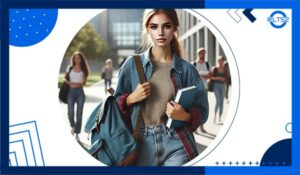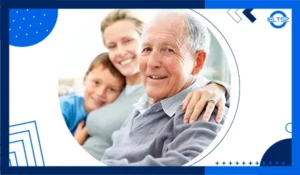نمونه سوالات اسپیکینگ آیلتس درباره یونیفرم (پارت 1 2 3)
در این بخش بیش از 20 مورد از نمونه سوالات اسپیکینگ آیلتس نمره 9 درباره “موضوع یونیفرم” را با هم میبینیم. این مجموعه از آخرین سوالات گزارش شده از سنترهای برگزار کننده آیلتس در ایران و خارج از کشور مربوط به پارت 1، 2 و 3 می باشند و شانس تکرار آن ها در آینده بالاست. در ادامه مطلب همچنین نکات گرامری، لغات و دلایل دریافت نمره 9 را به طور مشخص توضیح داده ایم تا راهنمایی برای علاقمندان باشد. 1000 نمونه سوالات اسپیکینگ آیلتس با جواب PDF پارت 1 2 3 پیشنهاد بعدی ما به شما عزیزان است.
نمونه سوالات اسپیکینگ آیلتس درباره موضوع یونیفرم (پارت 1)
یونیفورم یکی از موضوعات رایج در بخش اسپیکینگ آیلتس است که میتواند در هر سه بخش (پارت 1، 2 و 3) مطرح شود. در این مقاله، نمونههای کامل سوالات و پاسخهای نمره 9 را بررسی میکنیم و عوامل گرامری و لغوی که این پاسخها را در سطح نمره 9 قرار میدهند، تحلیل خواهیم کرد.
Do you wear a uniform at work or school?
Answer: Currently, I don’t wear a uniform, but during my school years, it was mandatory. I remember feeling a sense of unity with my classmates whenever we wore our uniforms. It eliminated the pressure of choosing outfits daily and helped maintain discipline. However, I also missed expressing my personal style through clothing.- What are the advantages of wearing a uniform?
Answer: Wearing a uniform fosters equality among individuals, as it minimizes social distinctions based on clothing. It also saves time and money since people don’t need to buy expensive outfits. Additionally, uniforms often promote a sense of belonging and professionalism, especially in workplaces or schools. - Are uniforms common in your country?
Answer: Yes, uniforms are quite common in my country, especially in schools and certain professions like healthcare and law enforcement. Many private companies also adopt uniforms to create a cohesive brand image. However, casual workplaces usually allow employees to wear whatever they prefer. - Did you like wearing a uniform when you were younger?
Answer: As a child, I had mixed feelings about wearing a uniform. On one hand, it made mornings easier because I didn’t have to decide what to wear. On the other hand, I sometimes felt restricted and wished I could wear more colorful and trendy clothes like my friends who didn’t have uniforms. - Should all students wear uniforms?
Answer: I believe uniforms are beneficial for students as they promote equality and reduce distractions related to fashion. However, I also think schools should allow occasional non-uniform days to let students express their individuality. This balance can help maintain discipline while encouraging creativity. - What types of jobs require uniforms?
Answer: Jobs that require uniforms often include those in healthcare, such as nurses and doctors, as well as law enforcement officers, pilots, and hospitality staff. These uniforms serve practical purposes, like ensuring hygiene or safety, and also help customers or patients easily identify the staff. - How do people usually feel about wearing uniforms?
Answer: People’s opinions about uniforms vary. Some appreciate the convenience and professionalism they bring, while others find them monotonous and restrictive. For instance, students might feel a sense of pride wearing their school uniforms, but they might also crave the freedom to wear casual clothes occasionally. - Do you think uniforms affect people’s behavior?
Answer: Yes, uniforms can significantly influence behavior. They often instill a sense of responsibility and discipline, especially in formal settings like schools or workplaces. For example, wearing a police uniform might make an officer feel more authoritative, while a school uniform can encourage students to focus on their studies. - What colors are common for uniforms?
Answer: Common colors for uniforms include navy blue, white, black, and gray. These colors are chosen for their professionalism and versatility. For instance, medical professionals often wear white to symbolize cleanliness, while corporate uniforms might feature darker shades to convey seriousness and sophistication. Would you prefer a job with or without a uniform?
Answer: I would prefer a job without a uniform because I enjoy expressing my personality through my clothing choices. However, I understand the benefits of uniforms in certain professions, such as creating a unified team image or ensuring safety. It ultimately depends on the nature of the job.
نمونه سوالات اسپیکینگ آیلتس درباره موضوع یونیفرم (پارت 2)
Describe a time when you had to wear a uniform. You should say:
When and where you wore it
What the uniform looked like
How you felt about wearing it
And explain why you remember this experience
Answer: One memorable experience of wearing a uniform was during my high school years. Our school had a strict uniform policy, and we were required to wear it every day. The uniform consisted of a white shirt, navy blue trousers, and a striped tie. It also included a blazer with the school emblem, which added a touch of formality.
At first, I found the uniform quite restrictive and monotonous. I envied students from other schools who could wear casual clothes. However, over time, I began to appreciate the sense of unity it created among my classmates. We all looked the same, which minimized distractions and helped us focus on our studies.
What made this experience unforgettable was the pride I felt during school events, such as sports days or annual functions. Wearing the uniform made me feel like I was part of something bigger, representing my school. It also taught me the importance of discipline and equality.
Looking back, I realize that the uniform played a significant role in shaping my character. It taught me to value simplicity and focus on what truly matters, rather than superficial appearances. While I no longer wear a uniform, I still cherish the lessons it imparted.

نمونه سوالات اسپیکینگ آیلتس درباره موضوع یونیفرم (پارت 3)
Why do some companies require employees to wear uniforms?
Answer: Companies require uniforms to create a professional image and ensure that employees are easily identifiable. Uniforms also promote equality among staff, as they eliminate distinctions based on clothing. Additionally, in industries like hospitality or healthcare, uniforms serve practical purposes, such as maintaining hygiene or safety standards.- Do uniforms limit individuality?
Answer: To some extent, uniforms do limit individuality because they restrict personal expression through clothing. However, they also encourage people to express themselves in other ways, such as through their skills, personality, or creativity. For instance, a student might focus more on academic achievements than fashion trends. - How do uniforms impact workplace culture?
Answer: Uniforms can positively impact workplace culture by fostering a sense of unity and teamwork. They help employees feel like they are part of a collective effort, which can boost morale and productivity. However, if uniforms are uncomfortable or poorly designed, they might have the opposite effect, causing dissatisfaction among staff. - Should uniforms be more fashionable?
Answer: While functionality is the primary concern for uniforms, incorporating fashionable elements can make them more appealing. For example, modern designs and comfortable fabrics can enhance the wearer’s experience. However, the focus should remain on practicality, especially in professions where safety or hygiene is a priority. - What role do uniforms play in schools?
Answer: Uniforms play a crucial role in schools by promoting equality, reducing peer pressure, and maintaining discipline. They help students focus on their studies rather than fashion, and they also create a sense of belonging. However, some argue that uniforms suppress creativity, so schools should strike a balance. - Are there any disadvantages to wearing uniforms?
Answer: Yes, there are some disadvantages. Uniforms can be restrictive and uncomfortable, especially if they are not designed well. They also limit personal expression, which can be frustrating for individuals who value fashion. Additionally, uniforms can be costly for families, particularly if they need to be replaced frequently. - How do uniforms influence public perception?
Answer: Uniforms often create a positive public perception by conveying professionalism and authority. For example, people tend to trust individuals in police or medical uniforms because they associate these outfits with competence and reliability. However, uniforms can also reinforce stereotypes, so their design and use should be carefully considered. - Should uniforms be mandatory in all professions?
Answer: While uniforms are beneficial in many professions, they should not be mandatory in all fields. Creative industries, for instance, thrive on individuality and self-expression, which uniforms might stifle. The decision to implement uniforms should depend on the nature of the job and its requirements. - How have uniforms evolved over time?
Answer: Uniforms have evolved significantly, becoming more functional and stylish. In the past, they were often rigid and uncomfortable, but modern designs prioritize comfort and practicality. For example, healthcare uniforms now use breathable fabrics, and corporate uniforms incorporate trendy elements to appeal to younger employees. Do uniforms have psychological effects on people?
Answer: Yes, uniforms can have psychological effects. They often instill a sense of pride, responsibility, and belonging. For example, wearing a military uniform might boost a soldier’s confidence, while a school uniform can make students feel more focused and disciplined. However, they can also cause stress if they are uncomfortable or poorly designed.
عوامل گرامری و لغوی که پاسخها را در سطح نمره 9 قرار میدهند
- تنوع ساختارهای گرامری: پاسخها از ساختارهای پیچیده مانند جملات شرطی (If uniforms are uncomfortable, they might cause stress) و جملات نسبی (Uniforms, which promote equality, are common in schools) استفاده میکنند.
- لغات پیشرفته: کلماتی مانند “foster equality,” “minimize distractions,” و “instill a sense of pride” نشاندهنده دامنه لغوی گسترده هستند.
- انسجام و پیوستگی: پاسخها از linking words مانند “however,” “for example,” و “additionally” برای ایجاد جریان منطقی استفاده میکنند.
- جزئیات و توسعه ایده: هر پاسخ به طور کامل به سوال پاسخ میدهد و با مثالها و توضیحات اضافی توسعه مییابد.
- تلفظ و روانی: پاسخها به گونهای طراحی شدهاند که به راحتی بیان شوند و از تلفظ صحیح کلمات پیچیده اطمینان حاصل شود.
تعیین سطح رایگان اسپیکینگ ❤️
نمونه سوالات اسپیکینگ آیلتس درباره “موضوع یونیفرم” پارت 1 2 3 را به همراه سمپل های نمره 9 آن ها با هم دیدیم. در ادامه نمونه سوالات دسته بندی شده اسپیکینگ آیلتس پیشنهاد آخر ما به دوستان گرامی هست. این نمونه سوالات اسپکینگ از پرتکرار ترین تاپیک های این بخش و همچنین جدیدترین موضوعات می باشند. این مجموعه توسط یکی از سایت های معتبر و فعال آیلتس تنظیم شده است. همچنین برای تعیین سطح و تعیین رایگان نمره اسپیکینگ و دریافت جدید ترین سمپل های نمره 9 در کانال تلگرام اسپیکینگ ما همراه باشید و به ادمین برای تعیین نمره اطلاع دهید.






